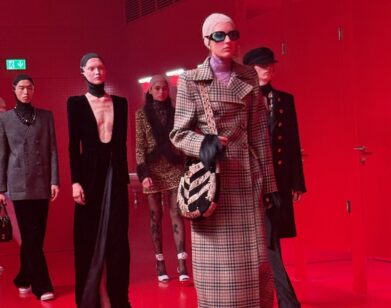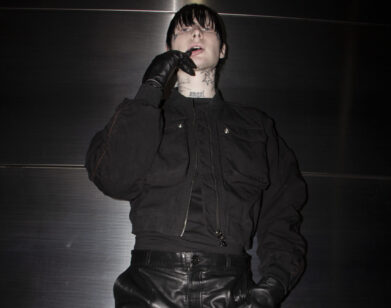A Visual History Of Lana Del Rey’s Most Peculiar Album Art
There’s a lot of ugly album cover art in the world. Luckily, I adore ugly things, both in their attempted seriousness or their blatant disregard for visual organization, which often occur simultaneously. The undisputed queen of perplexing album is Lana Del Rey, beloved singer and Courtney Love interviewer. There’s a lot of cover art to choose from: singles, EPs, albums, not to mention her unreleased material that lingers in the darkened corners of the Internet. Yesterday, she announced the official release date for her fifth album, Normal Fucking Rockwell!, alongside its tracklist and cover art, and it sure is…something. As curious as some of her artistic decisions may be, I find there’s an aesthetic arc at work nonetheless, one that finds inspiration in both the esoteric imaginings of the American cultural consciousness, and the everyday beauty of off-center selfies and lackluster lighting. Here are the strangest of the strange, from the pedestrian to the bewildering.
———
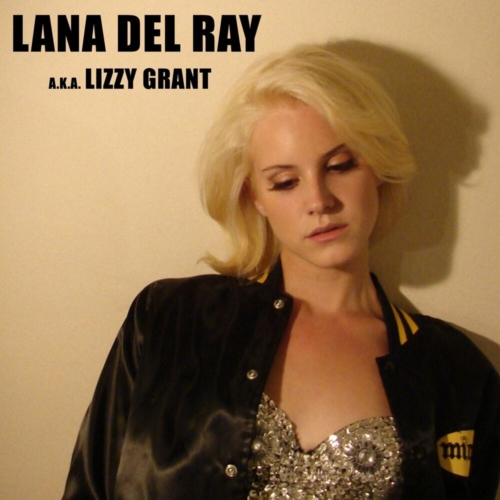
Lana Del Rey a.k.a. Lizzy Grant (2010)
Let’s go back to a simpler time, before the H&M commercials and twirls on Saturday Night Live. In 2010, Del Rey released her first official album, Lana Del Rey a.k.a. Lizzy Grant. The album showcases a Del Rey not yet fully formed. There’s an inkling of her interest in a mythical America, but she doesn’t yet have the means of expressing it fully. She’s a singer in transition–not really Lizzy, and not yet Lana, expressed by the album’s art through its conflicting imagery. The Microsoft Word-esque typography rests in stark black against a washed-out, beige wall, as nondescript as it is blasé. Dressed in a bomber jacker, she stares downward, distant and unsure, yet sports a bejeweled bustier and platinum-blonde hair, perhaps dreaming of resplendent pop stardom, but unsure of how to achieve it. The spotlight, much like the art direction, is present, though not quite focused.
———
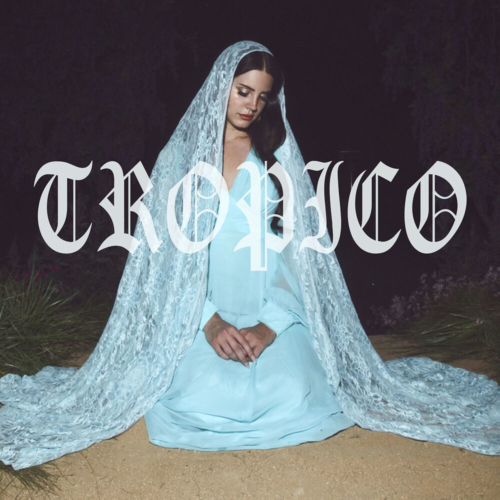
Tropico (2013)
The cover of this digital EP–featuring the three songs included in the short film of the same name–is bland, for sure. Del Rey, demurely posed in Robin’s egg blue as a Virgin Mary lookalike, is bathed in the flash of a camera. It’s over-exposed, it’s obvious, and that’s exactly how it should be. The short film Tropico is not subtle either, exaggerating Del Rey’s fascination with the darker side of Americana. In it, she quotes both Walt Whitman’s “I Sing the Body Electric” and Allen Ginsberg’s “Howl,” reimagines herself as both Eve in the Garden of Eden and a stripper, while Marilyn Monroe, Jesus, Elvis, and John Wayne watch on. With so much going on, it’s important to remember that gaudy, English-style font, so brazenly plastered across the cover art as if it belongs anywhere outside of a high school production of anything by Shakespeare, is truly the most egregious aspect of the entire composition.
———
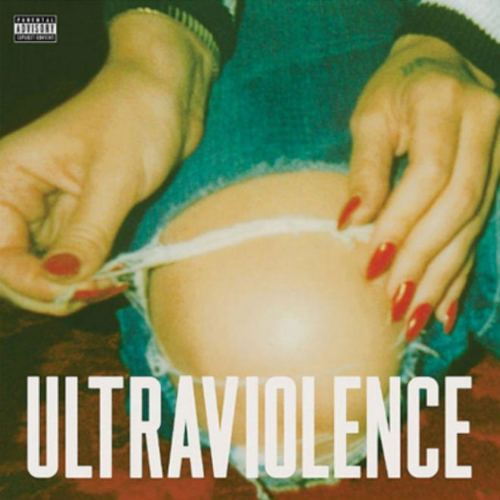
Ultraviolence (2013)
Hazy, supersaturated, and nonsensical are all words that fit the Urban Outfitters exclusive vinyl cover for Del Rey’s third official album, Ultraviolence. Instead of the stark, black-and-white portraits used for the standard version and the album’s accompanying singles, UO opted instead for Neil Krug’s picture of Del Rey’s knee to grace their exclusive vinyl cover. Brash as it may be, this particular cover is best encapsulated in one word: distressed. Just as distressed as I was upon first hearing “Shades of Cool,” the album’s second single. That bridge? Relentless and ravishing. I rest my case.
———
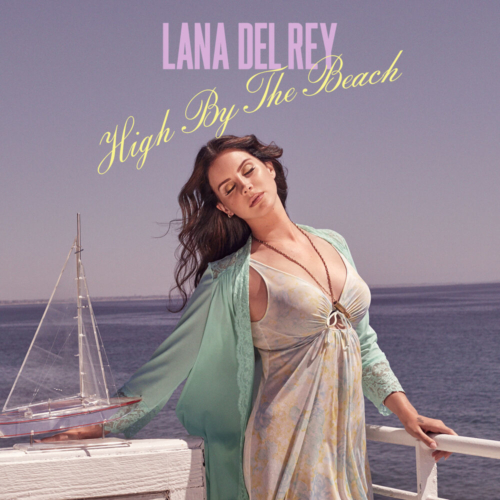
“High By The Beach” (2015)
When it came to her fourth album, Honeymoon, Del Rey was through with metaphors. She would be direct in her statements, forthright in her songwriting, and when she declared, in the album’s first single, that she just wanted to smoke weed by the seashore, she meant it. Gone are the greyscale visuals of her previous album, Ultraviolence. Here, she stands windswept on a balcony next to a miniature sailboat, because nothing says “new era” like a silk dress and pastels. The song’s video is even more ambitious in its redesign of Del Rey’s persona, especially when she blows up a paparazzi helicopter with a steampunk gun she keeps in a guitar case below her beach house. The drama is palpable, and the message is clear: graceful as she seems, she won’t not fuck you the fuck up. Period.
———
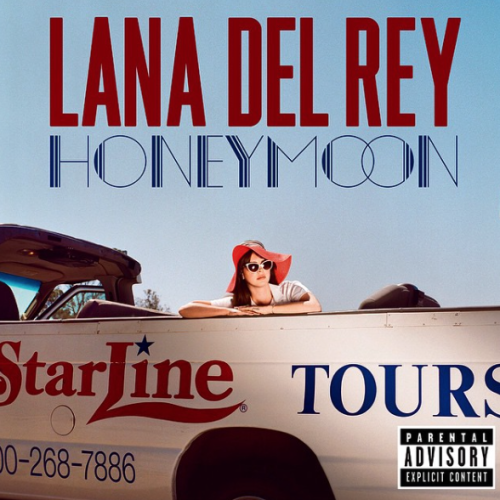
Honeymoon (2015)
Lana leans heavily into her obsession with the glamour and intrigue of Old Hollywood for the Honeymoon cover, shot by her sister Chuck Grant, while posing on a sightseeing bus tour. This marks a shift away from the melancholic, golden-hued ingenue of Paradise, placing Lana not in the proverbial spotlight, but rather as a voyeur, more interested in analyzing stardom writ-large than composing a tragical narrative for herself to star in. Fans could call the number on the side of the bus (which is still active at the time of this story’s publishing) to hear recordings of Lana reciting T.S. Eliot poems and new music from the album. She even answered the phone herself to chat with a few lucky callers. All this points towards her attitude as a pop star who was going to do the kind of outreach, and make the kind of album art, she wanted to—on her terms, and in her way.
———
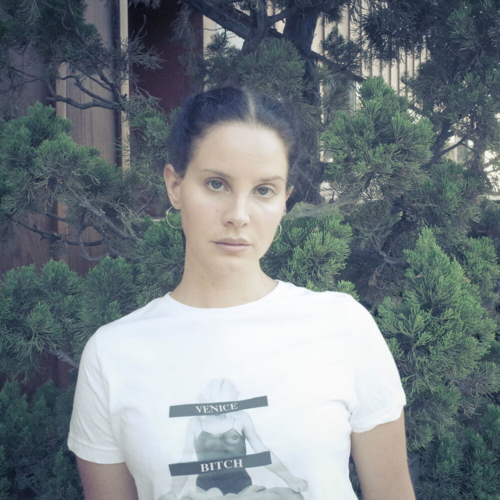
“Mariners Apartment Complex” (2018)
One of three singles released before the official announcement of Norman Fucking Rockwell!, “Mariners Apartment Complex” is a remarkable, beautifully rendered song about forgiveness, compassion, and self-assurance. The song’s cover art is just as confident, especially in its being, well, unremarkable. The coloring is reminiscent of the Walden Instagram filter (or is it more of a Nashville?), with Del Rey standing, poised and off-center as ever, in front of a nondescript building. There is no text overlaid, no suggestion of a song–it’s just Lana. At this point in her career, you know what you’re getting: wistful melodies and ruminations on being young, American, and free. She stares back with a face that reads, “Yeah, my shirt says ‘Venice bitch’ on it. So what?” It’s refined, it’s pedestrian, it’s of the people, and for the people. What more could you want?
———
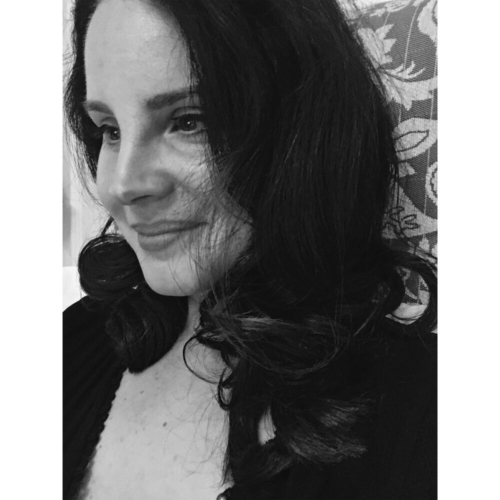
“Hope is a dangerous thing for a woman like me to have – but I have it” (2019)
Like “Mariner’s Apartment Complex” before it, the cover for “Hope is a dangerous thing for a woman like me to have – but I have it” continues the trend of MySpace-era self-portraits, though this time Lana opts for a subtle black-and-white filter. She gazes wistfully into the distance—a taut, self-assured smile on her face, her brunette curls falling listlessly around her shoulders. She knows the risks involved in holding onto something as delicate and ephemeral as hope, but you know what? She has it anyway. And there’s nothing you can do to stop her, or her camera roll.
———
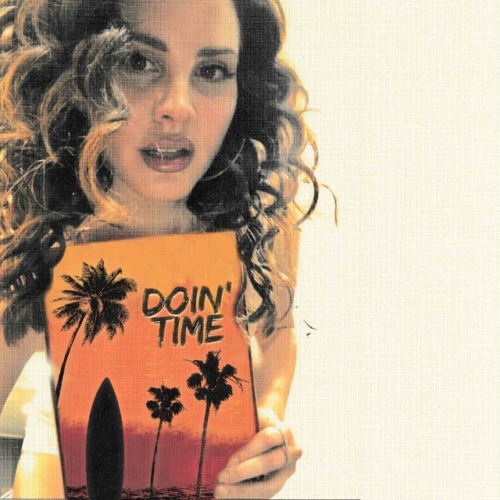
“Doin’ Time” (2019)
In the year of Our Lord 2019, no one is unfamiliar with fuzzy, webcam-esque selflies, Lana Del Rey included. In the art for her cover of the classic Sublime song, she’s leaned over, flashing a picture of featuring the song’s title against a highly saturated beach sunset, because why spend money on professional single art when you can just take the damn thing with your phone, just like Lady Gaga did in 2012. As truly strange as the artwork may be, the song is actually pretty fantastic, and a true return to form.As mediocre as cover art may be, the song is actually pretty fantastic, and a true return to form. Revamped summer anthems: one, graphic design: zero.
———
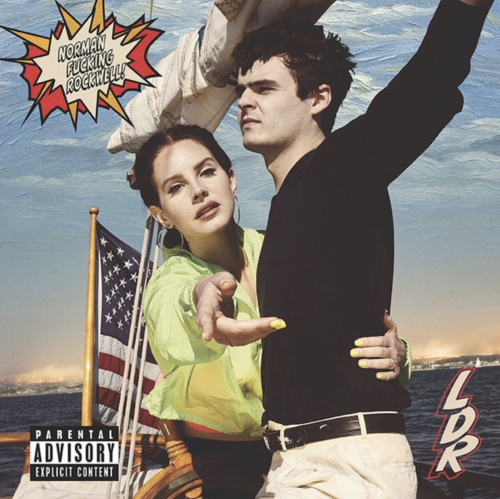
Norman Fucking Rockwell! (2019)
How did we get here? When did the unassuming, plaintive Lizzy Grant of yesteryear become the madcap, pastiche, mononymous LDR of 2019? That the album is titled Norman Fucking Rockwell! in the first place is peak Lana Del Rey. The album art represents her obsession with American popular culture overflowing with a romanticization of a country that never really existed, expressed through comic book-style typography, yet another Kennedy reference, and Jack Nicholson’s grandson. It would be unfair to deem the album a parody of itself, since that would infer a self-awareness that hints toward the insincere and ironic. The truth is, Del Rey has never been disingenuous about anything she does, and this is her at her most heartfelt, her most zealous, her most confident. Is is diabolical? Is it avant-garde? Is it camp? It appears to be all of the above.




